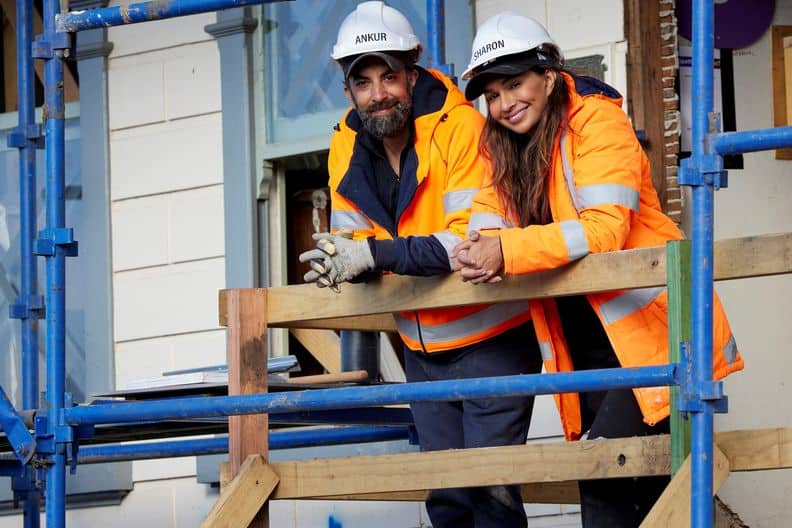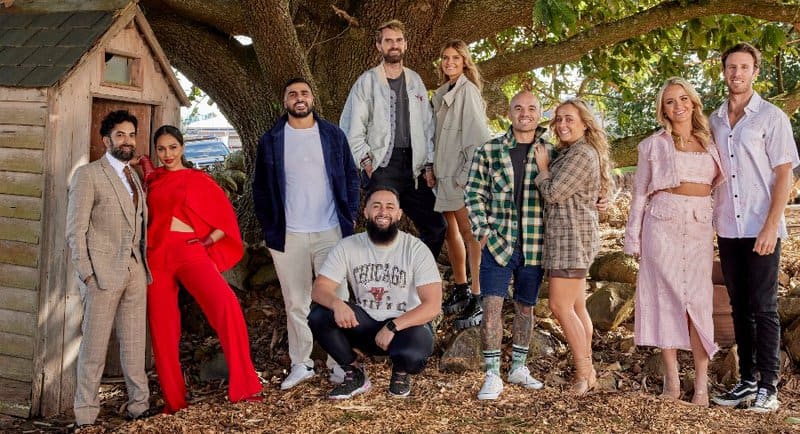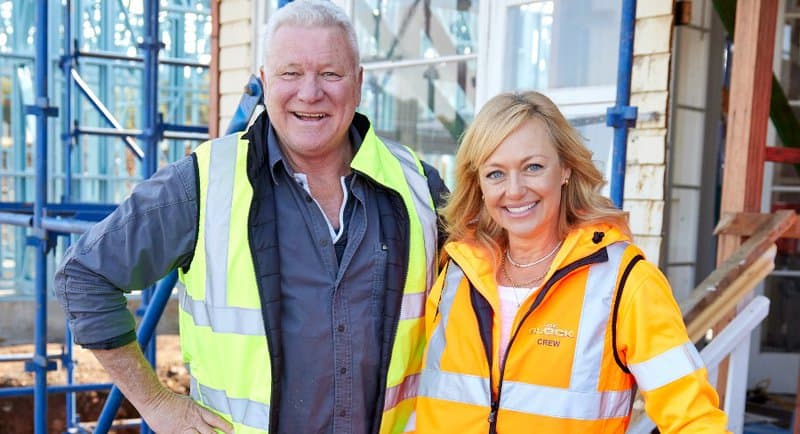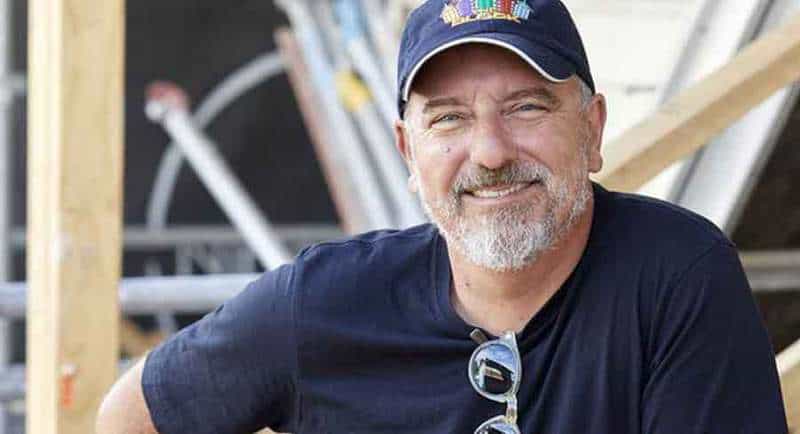The Block is back on Nine and 9Now on Sunday, August 7 at 7 pm for its 18th season, The Block: Tree Change, on a new site in Victoria’s Macedon Ranges in Gisborne South.
This is one of the biggest endeavours undertaken by the long-running program, and Mediaweek caught up with The Block’s creator and executive producer Julian Cress about the mammoth project, and why he considers it a “$5 billion dollar show”.
When asked why now was the right time for a tree change, Cress said that it reflected the changing tastes and lifestyles of the show’s audience following the Covid-19 pandemic.
“We were discussing what to do with Michael Healy, the director of television at Nine – his thought was that we live in a different world now post-Covid. We started discussing what we thought the audience was thinking about in their lives, and the idea of a tree change, or a sea change came up as something which we think a lot of people are considering. It’s something that’s very aspirational, and not everybody can do it, but we thought it would make for a good subject for The Block.”
This reflects Cress’s own life choices after he recently moved to Macedon Ranges himself, which helped him discover the location for this season of The Block.
“I found out this property was for sale. It was pasture land and had thousands of sheep on it. I climbed over the fence, through the long grass, walked up the hill, and looked out at the view. I saw this beautiful view of Mount Macedon and the Macedon Ranges, and called Michael Haley to say ‘I think I found it.'”
Building The Block
When Nine bought the property, it only had one homestead which was eventually renovated by the show’s host, Scott Cam. The contestants instead had their houses transported to the property. Cress said that this wasn’t the first time it has been done on the show, but it was the biggest version of the exercise.
“The first time we did it was in Elsternwick (2017) a few years ago where we bought a block of vacant land and put old homes on it. This year, we’ve upsized everything significantly and put homesteads on each of the properties. They came from as far away as Queensland. We designed modern pavilions to be added to each of them as well. We also added these massive Stratco sheds that are over 200 square metres each for garaging and whatever else people need when they make a tree change.
“It was a ridiculous challenge that we set for ourselves and for the contestants. It really is next level but it made for a cracking series of television.”

Cress said that one of the most exciting parts of the production was the cutting-edge work that the team did in the area of sustainability, which he felt is an important component of the show moving forward.
“We’ve really worked very hard to explore all of the opportunities afforded to us in regards to sustainability. We’ve put a lot of effort into making these homes fully sustainable. Even our construction was was done off the grid using solar power. Now we’ve finished the homes, they are fully kitted out with solar power and geothermal technology for heating and cooling. Some of these new sponsors that we’ve brought into the show are showcasing incredible technology that is really fresh and interesting. We even 3D printed a building this year – it’s the first 3D printed building in the southern hemisphere.
“We recycled all of our building materials, we recycled the topsoil. We implemented so many new measures that I think point to the future of construction, and the whole audience will get a whole lot more satisfaction from this series. It’s a really important conversation that everybody needs to have. Climate change is not going away and we have to do our part to show people how best to tackle it for the future.”
While building, the production also experienced a first for The Block, in the discovery of Aboriginal artifacts. This discovery saw the program work with Wurundjeri elders to make sure the situation was respectfully and appropriately approached.
“We worked very closely with the Wurundjeri elders, the local tribe. We had to cordon off certain parts of the site because they were significant Aboriginal artefact sites. We worked very closely together and solved that problem.”
The Casting Challenge
Cress said that the production ran into its fair share of early challenges, first when a team tested positive for Covid-19 at the start of filming, and then when a team pulled out of the show for the first time after only three days.
“We’ve never experienced that before,” said Cress. “Most people see The Block as an opportunity of a lifetime. Of the 45,000 applications we get every year, I would have thought most of them would understand that it’s going to be a significant challenge. It’s not going to be the easiest thing they have ever done. My feeling is that The Block is not for everyone, clearly. They obviously decided that it wasn’t for them.
“It was one phone call to find another couple to fill that space and were able to get a new team on set ready to renovate inside of about 36 hours. We called them on Saturday and they turned up at The Block on a Monday at lunchtime. They started renovating on Monday and on Tuesday, back in Oyster Bay, their youngest child turned one. It was a huge sacrifice to make, but they were raring to go and they proved to be a fantastic, really competitive, energetic couple for the show.”

From host to renovator for Scott Cam
Season 18 of The Block will be the first season where the show’s longtime host, Scot Cam, also renovates a house on the program. Cress said while this isn’t part of the competition, it was a fun way to inspire the contestants.
“The property we bought is 70 acres large, it came with an original homestead that was already on site which was a dilapidated house that was built in the 1860s. It struck me that we’ve got this spare house here, perhaps Scott might like to renovate that alongside the contestants and add another really exciting layer of content to the program. I spoke to Scott about it and he said, he’d love to do that. It wasn’t in competition with the contestants, it was more to have some fun and to turn his hand to a bit of renovating and styling. He’s got really strong opinions on what a kitchen should look like or a bathroom should look like, and he had some great ideas and implemented them really well.”

Hosts Scott Cam and Shelley Craft
Why The Block is a $5 Billion show
In 2011, econometric modelling by the Housing Industry Association found spending on renovations across the nation was boosted by $251 million each time The Block aired a season, which Cress estimated must make The Block a $5 billion show by now.
“We’ve done 18 seasons of The Block now, so doing the math, we must have now generated over $5 billion dollars in the economy. At a minimum, it’s a $5 billion show.”

Left to right: Tom and Sarah-Jane, Omar and Osman, Scott Cam, Joel and Elle, Ankur and Sharon, Dylan and Jenny
Why no one has been able to replicate The Block
The Block has been a TV staple for Nine since 2003. The other commercial television networks have tried their hand at primetime home renovation shows such as House Rules (Seven) and The Renovators (10), but both failed to catch on to the degree of Nine’s format. When asked why he thought The Block has had such success in the market compared to its competition, Cress said that it takes a special skill set to produce the show.
“We not only have to be TV producers, but we also have to be property developers and have a deep understanding of construction methodology. I’m not saying that we’re particularly special, I’m saying that we’ve had the benefit of having learned from all of our mistakes over many years in creating the show. I don’t think there are a lot of people in the TV game that that share that same skill set.”
